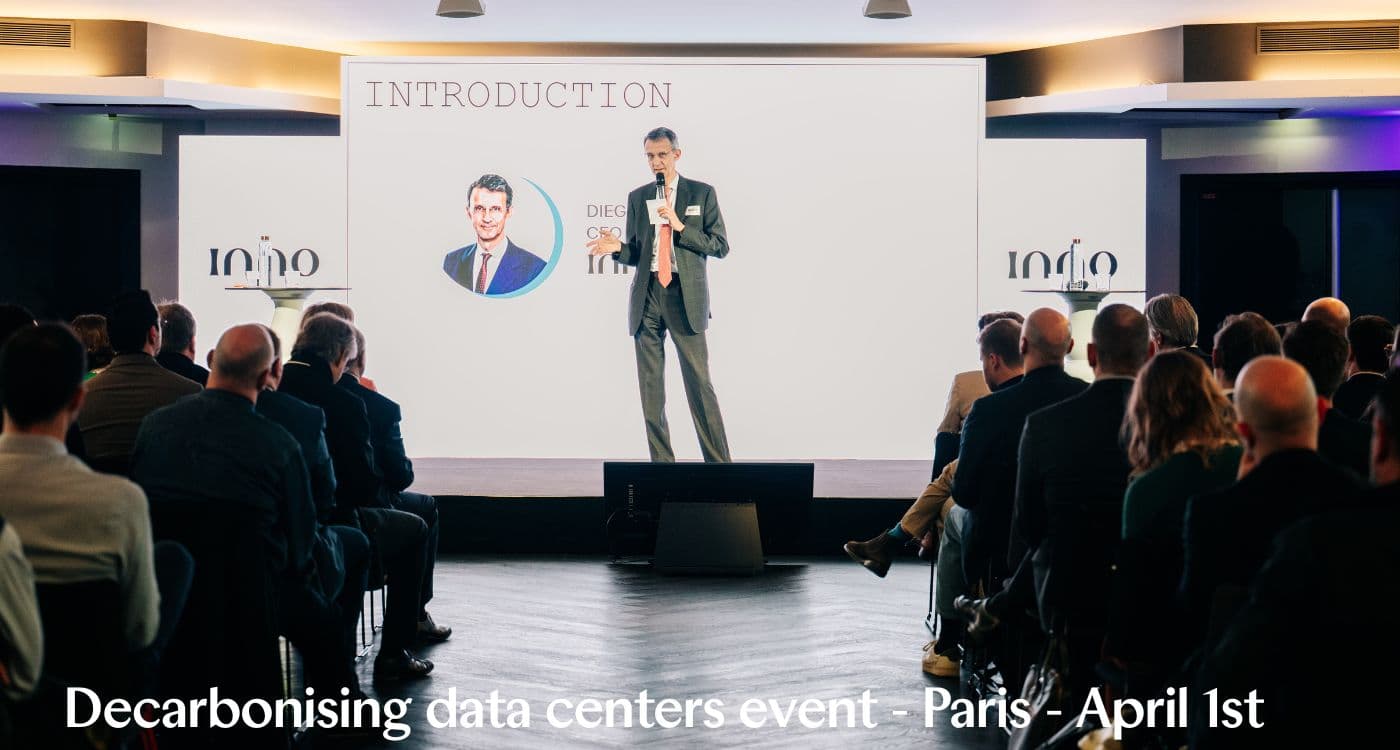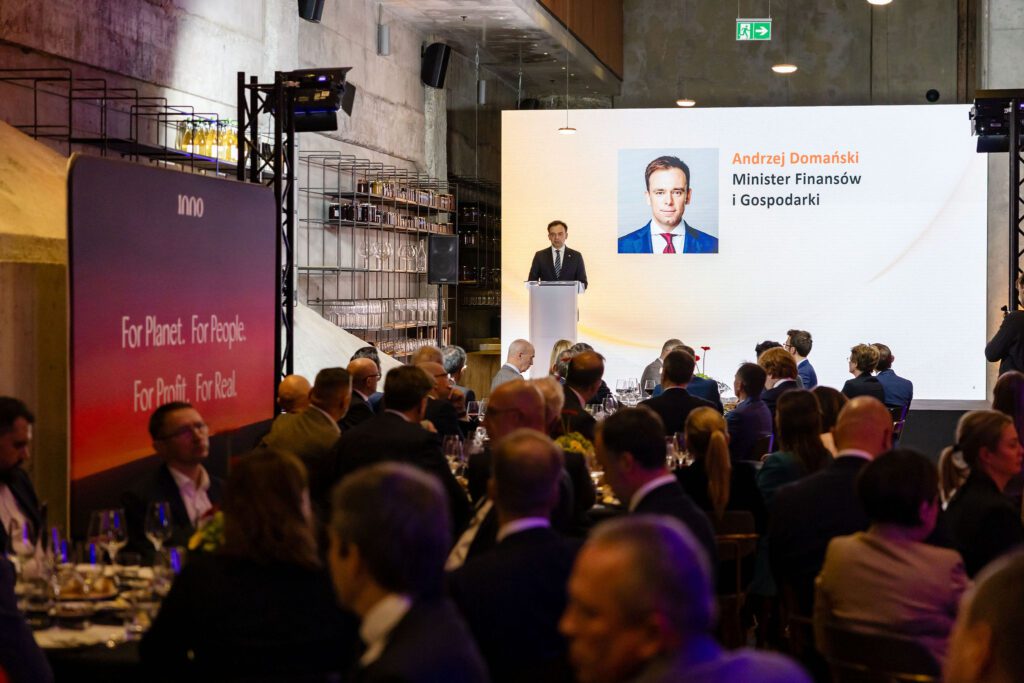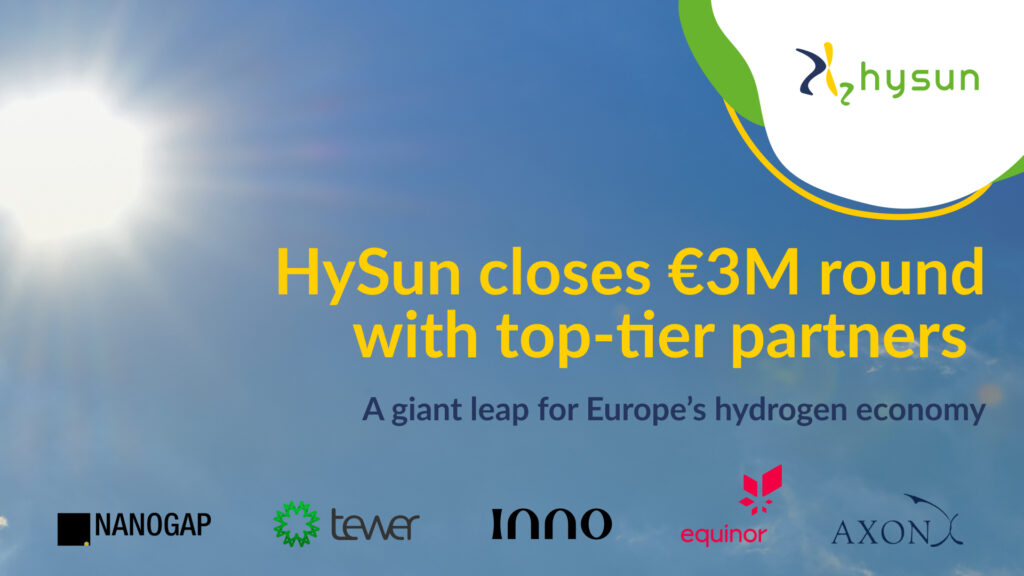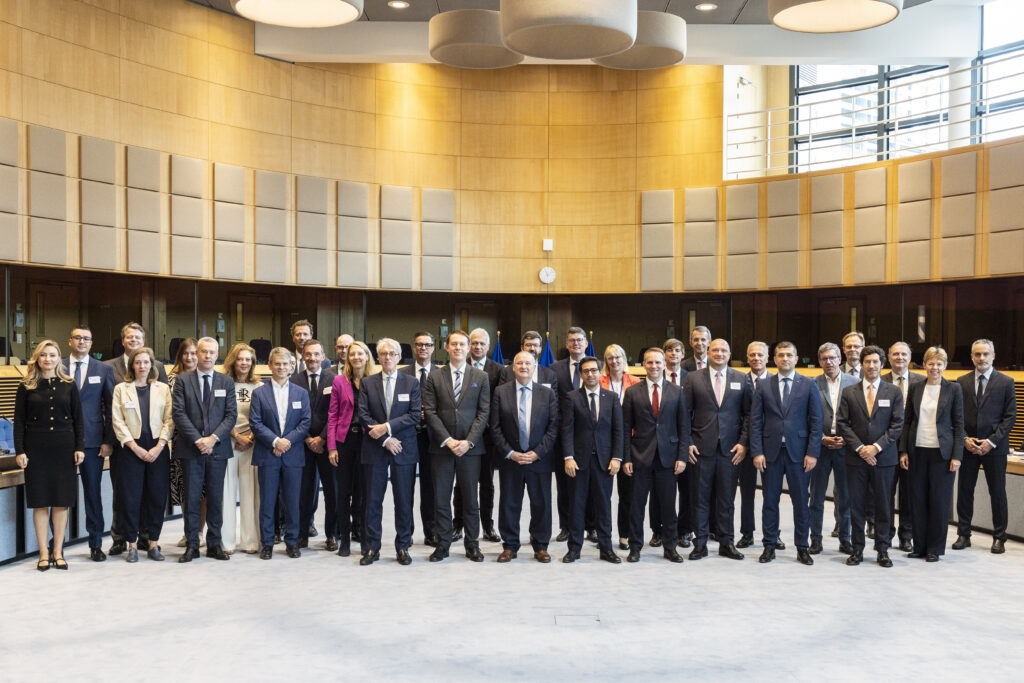On April 1st, InnoEnergy hosted an event in Paris focused on exploring concrete solutions to decarbonise the rapidly growing data center industry, which is increasingly pressuring the power grid and posing challenges to broader efforts aimed at decarbonising the economy.
Diego Pavia, CEO of InnoEnergy, welcomed over 150 investors and industry leaders. He took the opportunity to share InnoEnergy’s ambitious goal of mobilising €160 billion by 2030 to industrialise cleantech innovation, a goal announced alongside the launch of the company’s new brand last week.
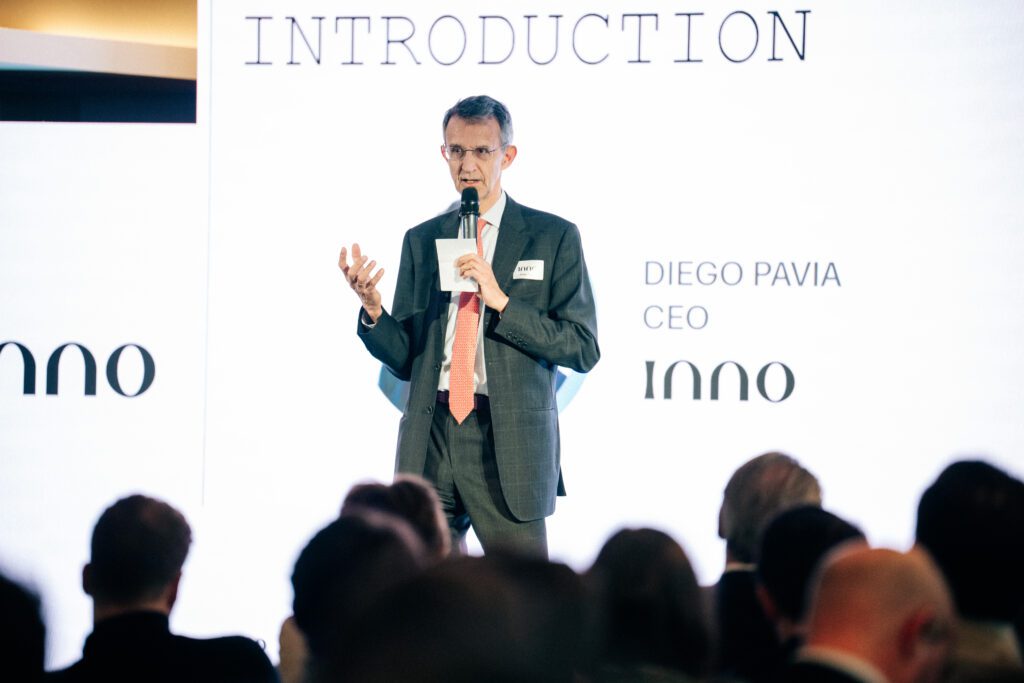
Introductory keynote to set the scene for the challenges ahead
The event kicked off with presentations from industry experts and regulators. Caroline Vateau, Sustainable Digital Director at Capgemini, highlighted the growing environmental impact of the over 11,000 data centers worldwide. These facilities not only strain energy resources and complicate decarbonisation efforts but also heavily affect water consumption and the dependency on raw materials. Vateau stressed that while this is a global issue, each data center needs to manage its environmental impact locally.
As the electrification of various sectors accelerates due to decarbonisation goals, the energy system becomes increasingly decentralised, creating challenges for the grid. Data centers will need to compete for grid access with other sectors, such as electric vehicles and green steel production. Vateau emphasised that the decarbonisation of data centers must be consistent across the entire value chain—beginning with construction and continuing through to the final users of the data. Efficiency must be integrated at every step.
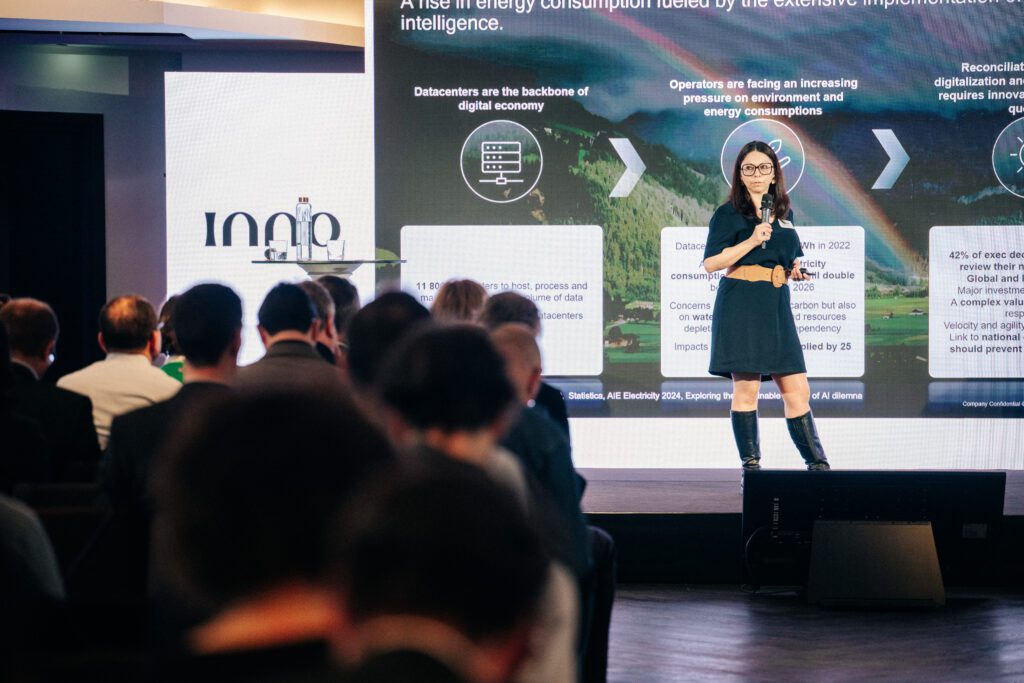
Keynote from the European Commission DG ENER
The next key note speaker, Nikolaos Kontinakis, from the European Commission’s Directorate-General for Energy (DG ENER), shared the regulatory perspective. He acknowledged the importance of decarbonising data centers and their potential impact on Europe’s net-zero goals. Kontinakis pointed out that the 2023 Energy Efficiency Directive now requires data centers to report when they install more than 500 GW of capacity. However, he noted that relying solely on technological energy efficiency would not suffice to meet the challenges. As such, the European Commission is exploring ways to enhance system efficiency and providing sources of decarbonised energy able to provide the amount of energy needed by data centers, such as Small Modular Reactors (SMRs).
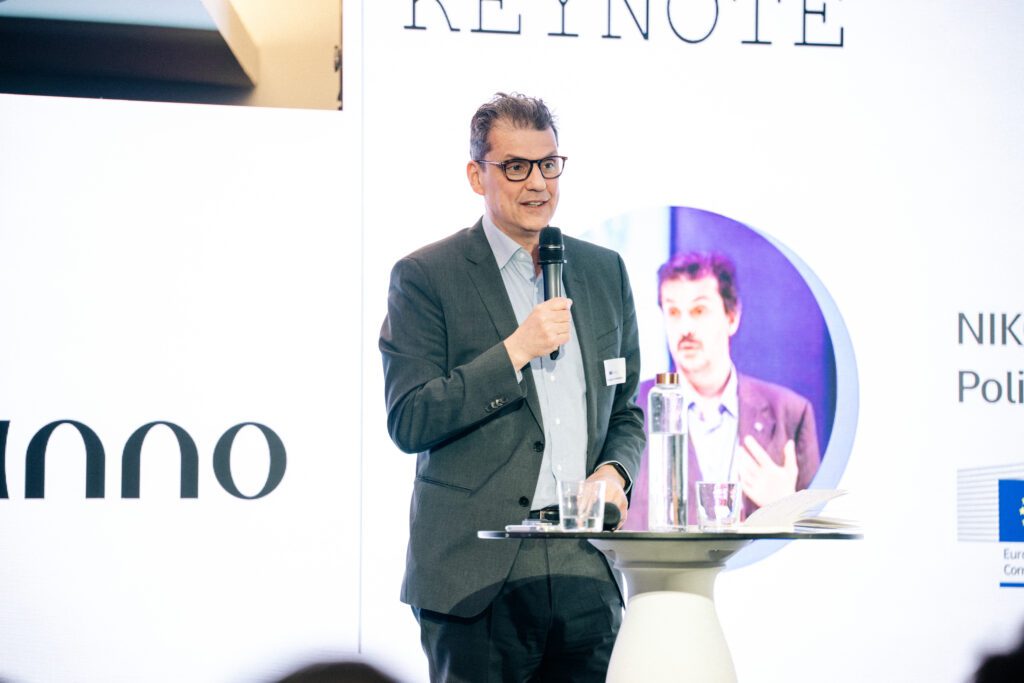
AI nexus panel
The event concluded with a roundtable discussion, moderated by Frank Gielen of InnoEnergy, featuring experts from GE Vernova, Schneider Electric, Google, and Skeleton Technologies. The panelists began by introducing their companies’ roles in the data center sector before delving into the challenges posed by artificial intelligence (AI) and its demands on both data centers and the grid.
Olivier Jamart, Executive Director of Microgrid at GE Vernova, highlighted that an estimated €5 billion investment will be required to stabilize the grid and meet increasing demand, as data generation is expected to grow fivefold in the coming years.
Hervé Hellez, Secure Power Europe & France Strategy Leaderr at Schneider Electric, emphasized that significant efficiencies could be achieved by supplying decarbonised energy and moderating demand, as not every process requires the power of AI.
Vincent Poncet, Cloud Sustainability Specialist at Google, noted that while AI solutions are becoming more energy-efficient each year, Google is also exploring methods to regulate heat and cooling using geothermal energy, as well as investigating the use of small modular nuclear reactors.
Frank Gielen also raised the issue of heat waste from data centers and the significant electricity required for cooling. Vincent Poncet from Google, shared that they are already making use of waste heat by supplying it to external buyers. He mentioned their a pilot project in Hamina, Finland, that allows to supply 80% of the heating needs of the local community. However, waste heat use requires conversion via heat pumps and transportation to customers and still presents challenges due to its low economic value.
The discussion also touched on the role of microgrids in balancing demand and responding to grid requirements, aiming to ease grid strain.
In conclusion, the event underscored that collaboration among utilities, grid operators, and data center operators is crucial to addressing the challenges of decarbonisation and ensuring the sustainable growth of the sector.
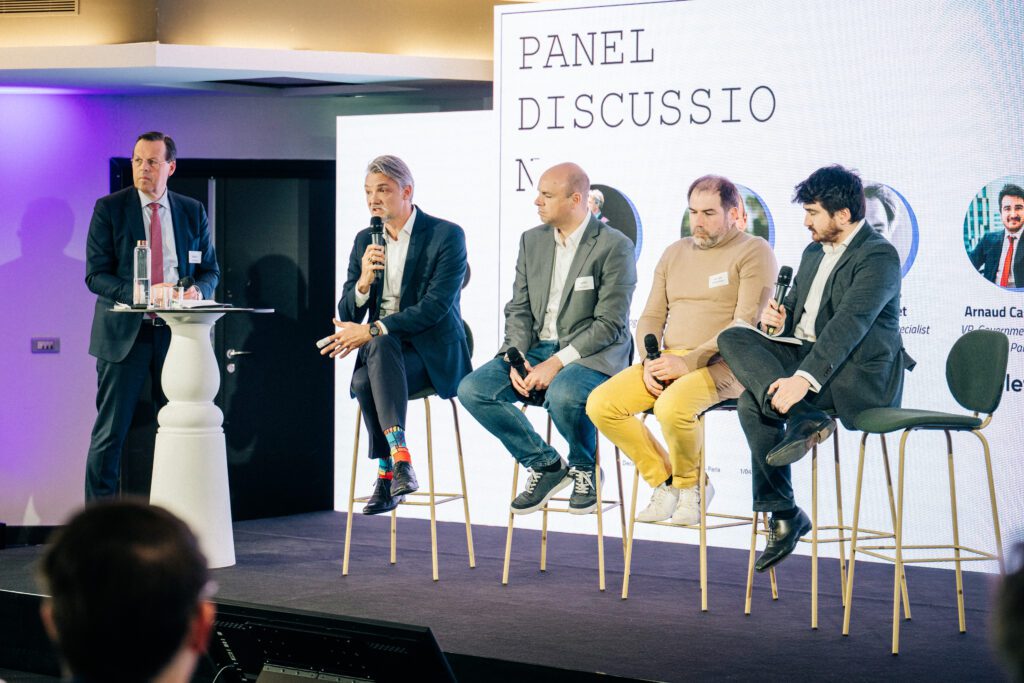
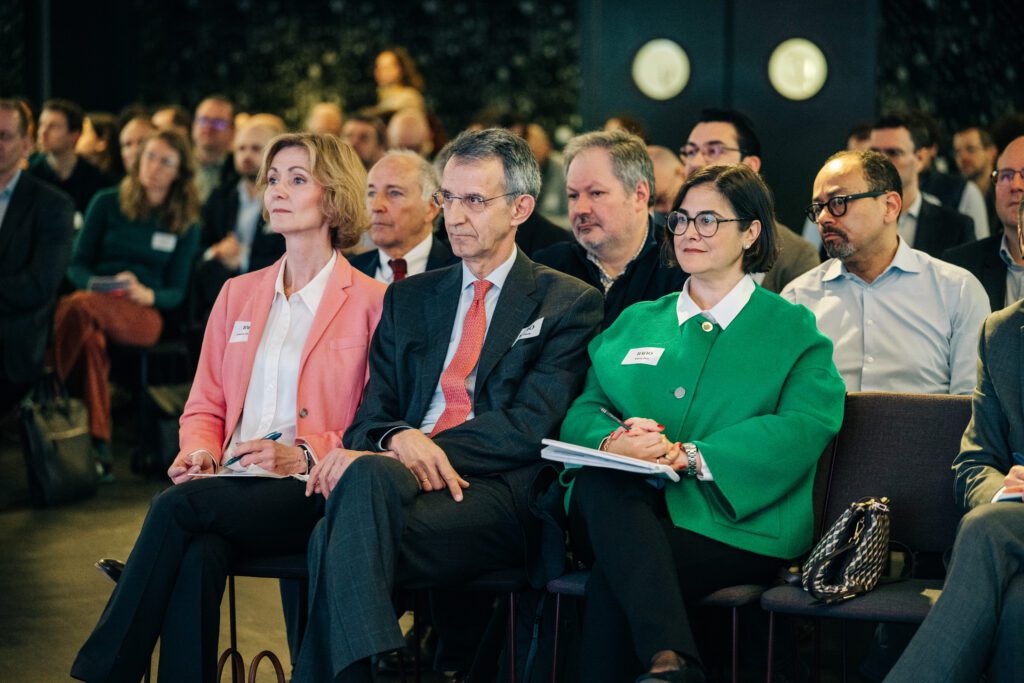
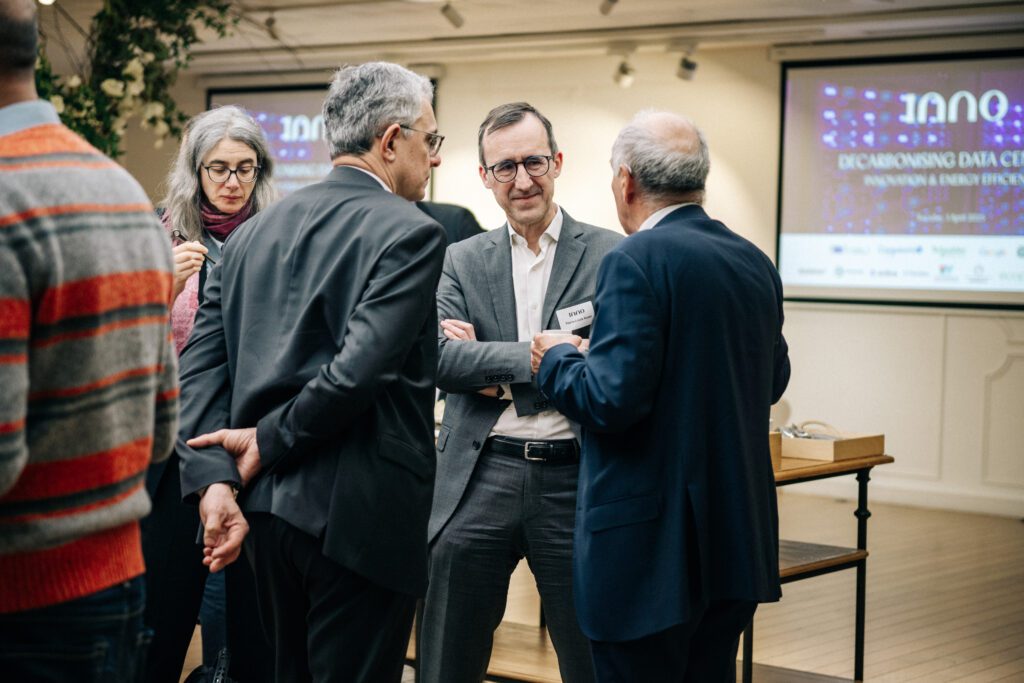
Key takeaways from the event:
🔹 The urgency is clear – Data centers are putting immense pressure on the grid and impacting global decarbonisation efforts.
🔹 Innovation and investment are essential – InnoEnergy is committed to mobilising €160 billion by 2030 to industrialise cleantech solutions. At the event, pioneering startups—including Skeleton Technologies, Prime Batteries, Enline, Flexidao, Heatventors, Ecop, AlpinovX, Seaqurrent, and Corpower—pitched groundbreaking technologies to help drive this transformation.
🔹 Regulation is evolving – The EU’s 2023 Energy Efficiency Directive now requires reporting from large data centers, while alternative energy solutions like Small Modular Reactors (SMRs) are being explored.
🔹 Electrification is intensifying grid competition – Data centers, EVs, and green industries must share limited resources.
🔹 Companies are stepping up – Google, Schneider Electric, GE Vernova, and others are pioneering solutions such as AI-driven efficiency, geothermal cooling, and waste heat recovery.
🔹 Collaboration is the way forward – Utilities, grid operators, and data center leaders must work together for sustainable growth.
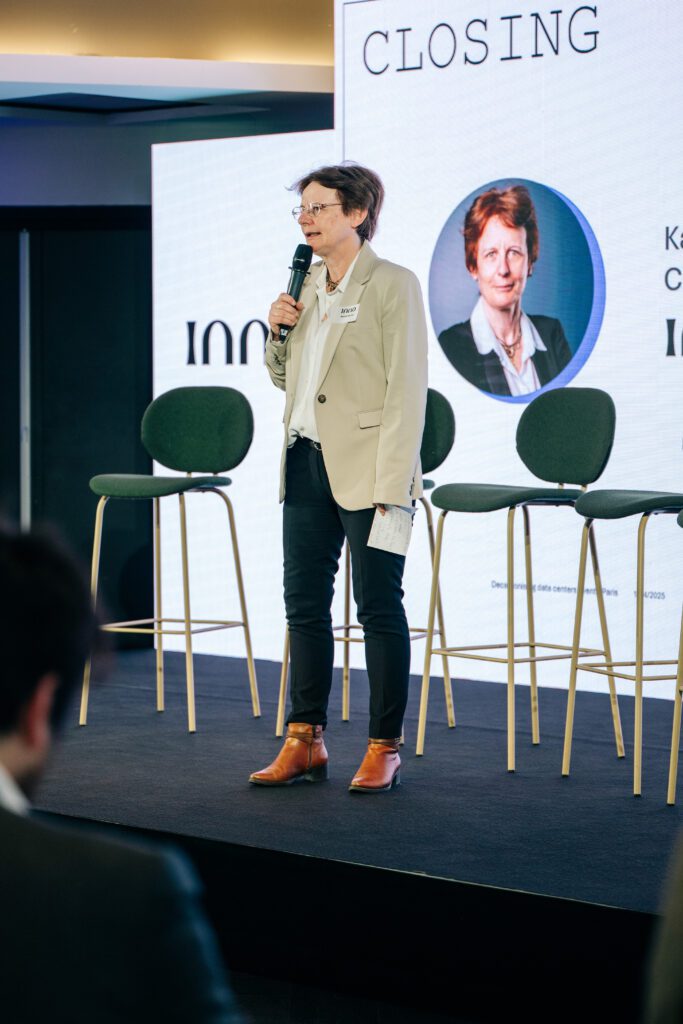
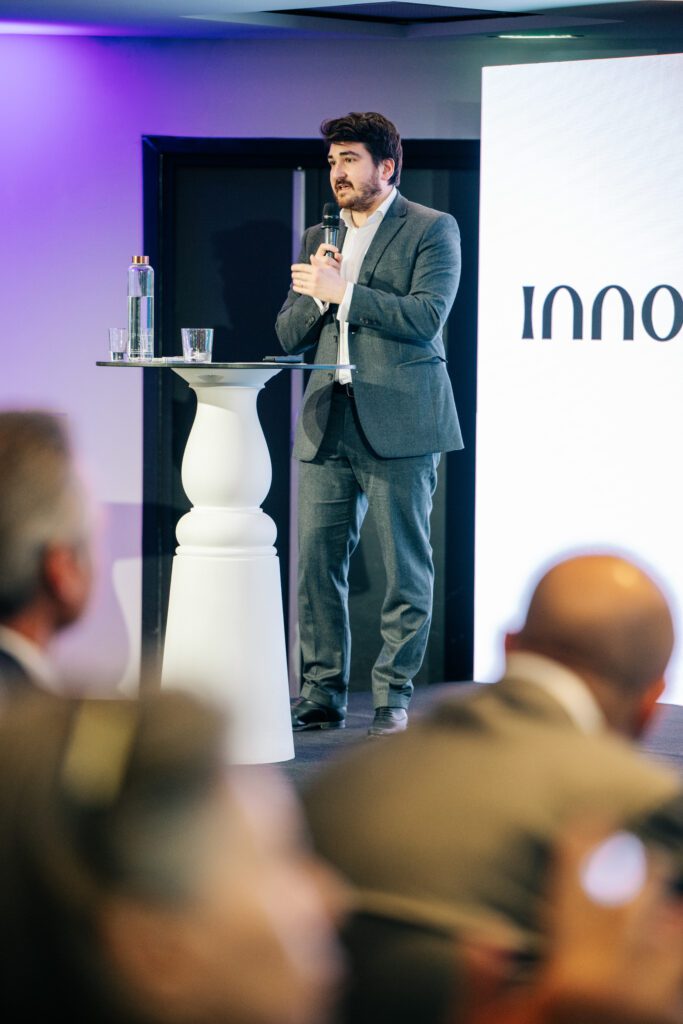
/
